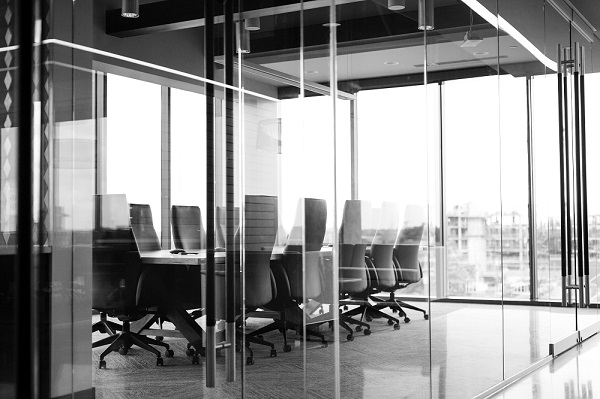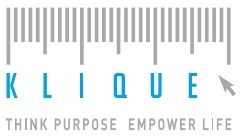
Workplace accessibility should not confine to the facility, physical design and furnishing of a space. It also covers “soft areas” such as the way a meeting or discussion is conducted and presentation is delivered. Everyone with or without disabilities or special needs has different needs. Implementing onsite accessibility measures for meeting and conference assures a pleasant experience to both attendees and presenters.
Audio Accessibility
Accessible Presentations for Individuals with Visual Impairments
Venue requirements
-
- Provide oral or electronic descriptions/maps of meeting room layouts, emergency exit locations, and amenities prior to the beginning of the conference/presentation. Let it be known to the participants who have visual impairments that there will be a pre-conference meeting in order to do an individualized tour of the facilities, identifying the location of the meeting rooms, amenities and exits. Offer assistance in helping to find appropriate seating in the meeting room.
- Offer to make available papers, agendas, slides, or other materials in alternative formats. Options include large print, Braille, tape recordings, and computer disks or CDs. Print materials can be transcribed in Braille through contracting with outside agencies or vendors. A verbal listing of contents should be included at the front of each tape. One other option is to have reader(s) available for participant(s) with visual disabilities.
- Reserve seats in the front row(s) and keep these available for persons with disabilities. Have a staff member or volunteer available to sit with a visually impaired participant in order to describe the presentations, if the participant so desires.
- Check for adjustable lighting in the meeting room; this is particularly important for an individual with low vision. Lowering the ceiling lights can increase the contrast—and thus the visibility—of audiovisual materials. However, moving from a brightly lit vestibule to a darkened room can cause temporary disorientation. Ask the participant whether a sighted guide would be helpful.
- Use sharply contrasting colors and large print for materials, maps, books, signs, menus, forms, and displays. If requested, all materials must be made available in large or raised print or in Braille.
Presenter Requirements
-
- Also remind the presenter(s) to avoid using gestures to illustrate a point such as using visual points of reference (e.g., “If you’ll notice over here…” or “If you compare this figure with that one…”)
- It is not necessary for the presenter to create a “special” presentation if it will diminish the content. The presenter should be reminded that all visual material must be described in detail—which also means that items should not be censored. If the presenter would normally exhibit a graphic as part of the talk, there is no need to jettison it because of the possible presence of visually impaired attendees, the graphic just needs to be described in detail.
- It can be suggested to presenters that they might consider bringing along objects that the blind can touch – nothing fragile – items which can be picked up and held. Also, interspersing a talk with documentary sound examples may bring the concept to life in a way sometimes more vivid than pictures. Use of background music, if it is appropriate to the presentation topic, may also be a rich addition.
The items listed in this section may also increase the accessibility for sighted individuals with reading or learning disabilities.
Visual Accessibility
Accessible Presentations for Individuals who are Deaf or Hard-of-Hearing
-
- Any conference material that includes an audio component should have a text version accompanying it (open or closed captioning.) This includes all training and informational video and multimedia productions.
- Arrange for qualified, professional interpreters, trained in the preferred communication style, for example, American Sign Language, Signed English, or Cued-Speech. Arrange for an adequate number of interpreters for meetings, meals, and social events; at least two interpreters must be available for any meeting longer than an hour and a half. Have an additional interpreter available for registration. Provide the interpreter with material ahead of time, if possible, so he/she can become familiar with it. Give the interpreter agendas and key printed information that will be used during the presentation.
- Allow preferred seating for individuals making use of sign language interpretation. Take into account that the interpreter needs to be either next to the speaker/presenter or seated in a sight line so as to allow the deaf person to see the speaker/presenter beyond the interpreter. (Preferred seating should also be away from heating and air conditioning units, hallways, and other “noisy” areas so as not to be distracting to the interpreter(s).) Keep lights bright in the area where the presenter and interpreter stand.
- Find out if any assistive listening devices will be used by the participants to improve the auditory reception of speech or sound information. These devices, which can be used alone or in conjunction with personal hearing aids, involve a microphone-transmitter unit, either worn by the speaker or placed close to the sound source and a receiver worn by the listener. Categories of assistive listening systems include:.
-
- Hardwired Devices
- Induction Loop Devices
- FM Devices
- Infrared Devices
- Amplification Systems
-
- Check that window coverings are adjustable to reduce or remove glare.
- Arrange seats in a circle for smaller discussion groups so the deaf participant(s) may more easily follow/know who is speaking.
- Have notes on the presentation available beforehand, if at all possible. Alternatively, have a staff member or volunteer available to take notes during the presentation, allowing the participant to focus on the speaker and interpreter.
- Be aware there may be deaf/hard of hearing individuals in attendance who don’t use sign language to communicate and that they may require Real Time Captioning services. Also the possibility of real-time captioning for large group meetings should be investigated.
Physical Accessibility
Accessibility for Individuals Who Use Wheelchairs
-
- Ensure that there is handicap parking available, if needed, making sure that the parking space(s) will also accommodate lift equipped vans.
- Hold meetings/presentations in rooms where the doors are wide enough, and easy to open (requiring no more than 5 pounds of pressure). Also ensure that the main entry and exit routes of the facility are easily maneuverable and obstacle free.
- The facilities where conferences or meetings are held must have wheelchair accessible restrooms. An accessible restroom includes wide easy-to-open doors (requiring no more than 5 pounds of pressure); unobstructed sinks of appropriate height; large stalls with raised toilet seats, grab bars, adequate space in which to maneuver a wheelchair, with flushing mechanisms and dispensers easily operated/reached from a sitting position.
- Allow for adequate space for wheelchairs in meeting rooms. Also allow adequate space at the general seating conference and banquet tables alongside the other participants, making sure not to create a fringe community of wheelchair users on the outskirts.
- Be mindful that the registration table is wheelchair accessible.
Accommodating Participants with Differing Disabilities
In the event that there are conference participants with both visual and hearing impairments, accommodations necessary for one person may conflict with the needs of another. For example, presenters using overheads usually request that the lights be dimmed in the room, making it difficult for a person who is hard of hearing to see the interpreter in the dim light. However, if the lights are raised, individuals with visual impairments may have difficulty seeing the overheads because the contrast is decreased by the bright lighting. Therefore, it is particularly important to consult with persons with visual impairments and those who are deaf or hard of hearing before visual aids are used or the lighting level in the room is brightened or dimmed.
A Special Note for Conferences and Meetings Including Meals
When planning conferences and meetings that include meals, meeting planners should:
-
- Include personal assistants and interpreters in the estimated number of participants.
- Make adequate provisions for seating, allowing all participants to sit in the same area. Do not place persons in wheelchairs, or those who use walkers or dog guides on the fringes of the dining area.
- Avoid buffet lines; they can be particularly difficult for persons with mobility or visual impairments. If they can’t be avoided, ask the individual with a disability if she/he would like assistance in reaching the food.
Source: https://www.cdc.gov/ncbddd/hearingloss/transcripts/Making-Meetings-Accessible.pdf
Postscript: The glass panels and doors shown in image above do not comply with Building and Construction Authority (BCA) Code on Accessibility in the Built Environment 2019. Check out the requirements for glass doors here.
Read more:
Workplace for People With Colour Blindness
Enabling People with Special Needs Through Design
